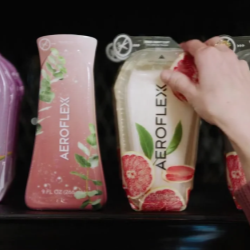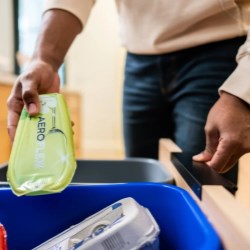

A counterfeit item is something that imitates an item of value or importance. Luxury watches, footwear, purses, clothing, pharmaceuticals, oil, and electronics are some of the most counterfeited items, but did you know that packaging can also be counterfeited?
Product tampering can cost the global economy an estimated $500 billion annually, which gives businesses handling shipped products good reason to invest in tamper-proof packaging and other anti-counterfeiting techniques.
What Is Anti-Counterfeiting in Packaging?
In packaging, anti-counterfeiting focuses on using special materials, technologies, and/or features that help to prevent counterfeit packaging. These techniques enhance the integrity of the packaging and brand.
Although every brand that uses packaging can benefit from anti-counterfeiting strategies, many companies that produce products, such as oil, pharmaceuticals, electronics, and luxury items, frequently utilize these techniques due to the high value of these products.
Why Is Anti-Counterfeiting Important?
Counterfeiting doesn’t only have adverse effects on brands but on consumers and the environment as well.
Because counterfeited products are not made to the specifications of a manufacturer and do not undergo quality control tests, the products can cause harm to unsuspecting consumers.
Counterfeit products contribute to environmental degradation through the use of inferior materials, improper disposals, and a larger carbon footprint associated with counterfeit supply chains. Unlike legitimate companies, those that produce counterfeit items aren’t investing in compliant packaging strategies to meet regulatory standards and protect their brands and the environment.
Anti-Counterfeit Packaging Technologies
More and more brands are implementing anti-counterfeit technologies that provide multiple layers of protection against counterfeit products and contribute to product and supply chain transparency for increased brand protection and value.
The range of these technologies is vast. While some oversee the big picture of packaging and a product’s journey, others play a smaller role, such as strengthening the packaging. Together, they can create a complete set of safety measures.
Blockchain Technology
Blockchain technology is a big-picture technology in anti-counterfeit packaging. It provides a transparent look into the records of a product’s journey from manufacturing to the consumer.
Tamper-proof Packaging
Tamper-proof packaging is designed to show evidence of interference with a package. Once damage has been done to a package, the package can’t be repaired.
Digital Watermarks
Digital watermarks are being used to improve trackability and recycling, and they’re also being used to improve authentication for packaging. Watermarks are difficult to replicate, making it more challenging for counterfeiters to imitate packaging.
Digital watermarks are sometimes referred to as “holograms” because digital watermarks are created with holograms.
QR Codes
Some manufacturers use QR codes that contain specific information that confirms the authenticity of the packaging.
Near-Field Communication (NFC) Technology
To verify authenticity, NFC chips are embedded into the packaging to communicate with a manufacturer through a platform accessible by smartphone or computer.
Radio Frequency Indication (RFID) Tags
Similar to NFC chips, RFID tags are smart labels that include information that helps to track, identify, and search through radio frequency.
Microtagging
Microtagging is a form of covert technology that embeds microscopic tags or markers into materials so counterfeiters can't replicate or detect them without specialized equipment. Microtagging is especially useful for precise categorization and classification.
Serialization
Serialization is the process of printing a unique serial number on each unit of the packaging to track products and prevent counterfeit items from entering the supply chain.
Security Fibers
Security fibers or threads are part of the growing protective packaging market that enhance barrier quality and increase resistance to punctures in packaging, leading to longer product shelf lives.

The AeroFlexx Benefits of Anti-Counterfeiting
Rather than attempting to implement one or several of these anti-counterfeit features into your current packaging, working with a packaging provider that builds these features into the design is the safer route.
The AeroFlexx Pak is an anti-counterfeit packaging solution designed with the following measures:
- Hermetic sealing to keep products safe and prevent tampering
- Closure features such as seals, tear tabs, and laser cut lines that provide evidence of tampering and deter attempts at counterfeiting
- A unique development and production process that makes replication or reverse engineering a nonissue
The AeroFlexx Pak also addresses environmental concerns in the counterfeiting process. It is made with 85 percent less virgin plastic compared to traditional bottles by containing 70 percent less plastic at the source and incorporating up to 50 percent recycled content. With airframe technology that uses air instead of plastic for packaging structure, the AeroFlexx Pak minimizes waste for a significantly smaller environmental footprint.
Want to learn more about how you can elevate your packaging? Get in touch now.


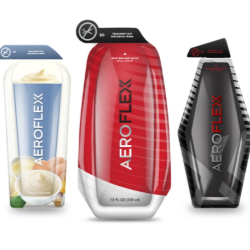

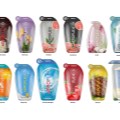
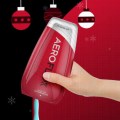

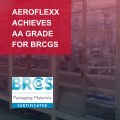
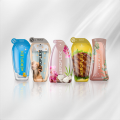
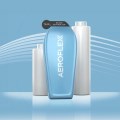


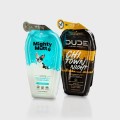


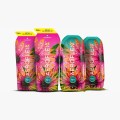













.jpg)
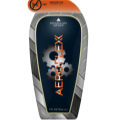










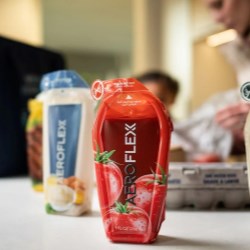


.jpg)
